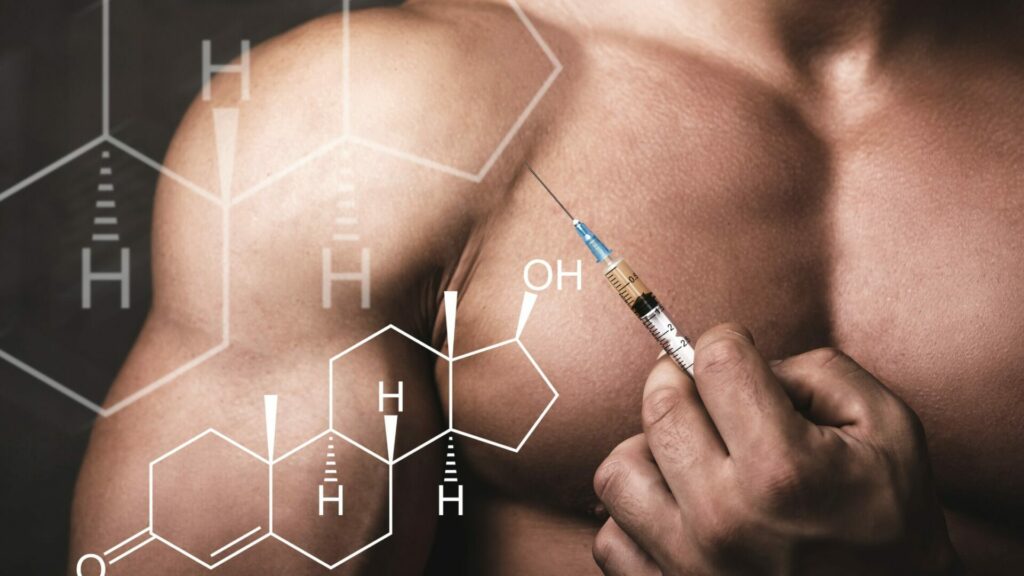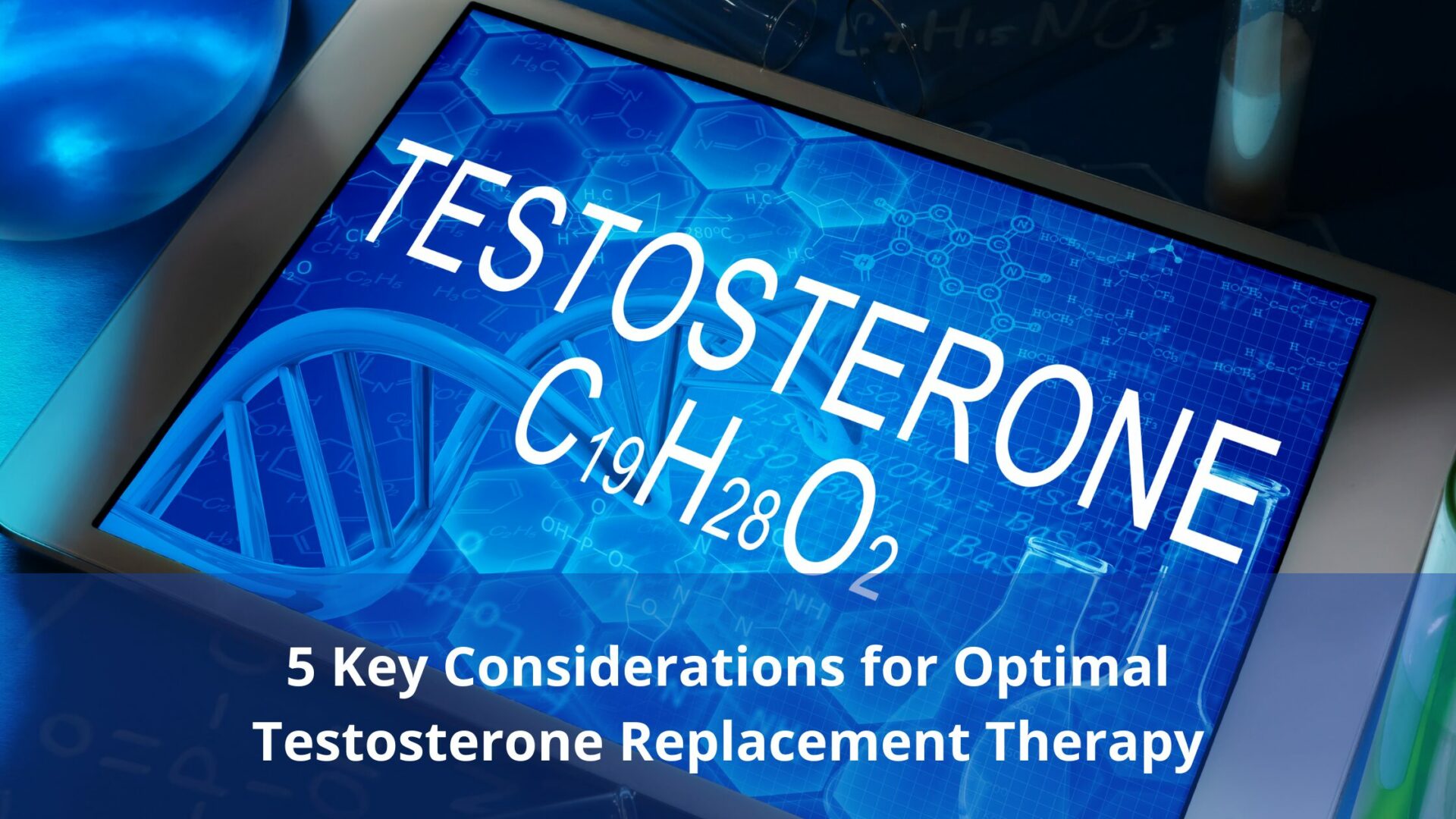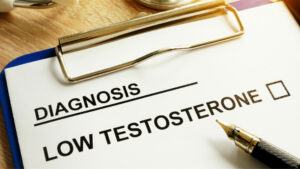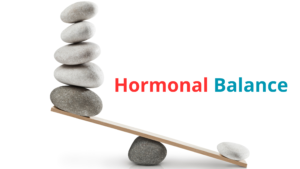Welcome to our comprehensive guide on Testosterone Replacement Therapy (TRT), where we delve into the various options available for men seeking to address the challenges of low testosterone levels. Testosterone, a vital hormone influencing multiple facets of men’s health, plays a pivotal role in maintaining energy, libido, and overall well-being. In this blog post, we’ll explore the benefits and risks of TRT, along with key considerations that empower individuals to make informed choices for optimal health. Whether you’re just starting your journey or looking for deeper insights into TRT options, this guide aims to provide valuable information to guide you towards a healthier and more vibrant life.
Table of Contents
What is Testosterone Replacement Therapy?
Testosterone Replacement Therapy (TRT) is a medical intervention designed to address the effects of low testosterone levels in the body. Testosterone, a crucial hormone primarily associated with male characteristics, plays a vital role in various bodily functions, including muscle mass, bone density, mood regulation, and sexual health.
When the body experiences a decline in testosterone production, individuals may encounter a range of symptoms, such as fatigue, reduced libido, diminished muscle mass, and changes in mood. TRT steps in to alleviate these symptoms by replenishing testosterone levels through various delivery methods.
One common method of TRT involves regular injections of synthetic testosterone. Administered every 1-2 weeks, these injections provide a steady release of the hormone, aiming to restore optimal levels within the body. Alternatively, topical gels and patches offer convenient options for application to the skin, ensuring a controlled and gradual hormone release.
Another approach is the use of testosterone pellets, which are implanted under the skin. These pellets release a consistent amount of testosterone over an extended period, typically several months, providing a sustained therapeutic effect.
The benefits of TRT extend beyond mere symptom relief. Individuals undergoing testosterone replacement therapy often report improvements in mood, energy levels, libido, and overall quality of life. Additionally, TRT may contribute to increased muscle mass and bone density, addressing some of the physical manifestations associated with low testosterone.
However, like any medical intervention, TRT comes with its set of considerations. Potential risks include acne and oily skin, fluid retention, and an increased risk of blood clots. It is crucial for individuals considering TRT to weigh these potential risks against the expected benefits and to engage in open and informed discussions with healthcare professionals.
Testosterone Replacement Therapy serves as an effective solution for addressing the symptoms of low testosterone. Whether through injections, topical applications, or implanted pellets, TRT aims to restore hormonal balance, providing individuals with an opportunity to enhance their overall well-being. As with any medical decision, consultation with healthcare professionals is paramount to ensure a tailored and safe approach to Testosterone Replacement Therapy.

5 Key Considerations for TRT Options
When considering Testosterone Replacement Therapy (TRT) options, individuals must carefully assess several key factors to make an informed decision about their treatment plan. These considerations play a crucial role in determining the effectiveness and suitability of TRT for addressing low testosterone levels.
Firstly, the dosage and frequency of TRT administration are pivotal. Understanding the optimal dosage and how frequently the treatment should be administered is essential for maintaining consistent testosterone levels in the body. This consideration ensures that individuals receive the right amount of hormone support without unnecessary fluctuations.
Another vital consideration revolves around the convenience of administration. TRT offers various delivery methods, including injections, topical gels, patches, and implanted pellets. Assessing the convenience of each option in alignment with one’s lifestyle is crucial. For those who prefer minimal intervention, topical applications or pellets might be more suitable, while others may find injections more manageable.
Individuals contemplating TRT should also have realistic expectations regarding the timeframe for experiencing noticeable results. The speed at which changes occur can vary among individuals, with some noticing improvements within a few weeks, while others may require a more extended period. Understanding and accepting this variability is an essential aspect of the decision-making process.
As with any medical intervention, being aware of potential side effects is fundamental. Common risks associated with TRT include acne, oily skin, fluid retention, and an increased risk of blood clots. Individuals considering TRT should weigh these potential risks against the expected benefits and engage in open discussions with healthcare professionals to make well-informed choices.
Finally, a personalized health assessment should be a primary consideration. Each individual’s health profile is unique, and factors such as pre-existing conditions, overall health, and lifestyle should influence the decision-making process. Consulting with healthcare professionals allows for a tailored approach, ensuring that TRT aligns with an individual’s specific needs and circumstances.
The 5 key considerations for Testosterone Replacement Therapy options underscore the importance of dosage and frequency, administration convenience, realistic expectations, awareness of potential side effects, and a personalized health assessment. By thoroughly evaluating these factors, individuals can make informed decisions about TRT, enhancing the likelihood of a successful and well-suited treatment plan for addressing low testosterone levels.
Benefits and Risks of Testosterone Replacement Therapy
Testosterone Replacement Therapy (TRT) presents a spectrum of benefits and risks that individuals considering this treatment should weigh carefully. Understanding both aspects is crucial to making an informed decision about whether TRT is the right path to address low testosterone levels.
One of the primary benefits of TRT is the improvement in mood and energy levels. Individuals experiencing fatigue and lethargy due to low testosterone often report a significant boost in vitality with TRT. Enhanced libido and sexual function are additional advantages, contributing to an improved overall quality of life.
Moreover, TRT has demonstrated its effectiveness in increasing muscle mass and bone density. These physical benefits not only address aesthetic concerns but also play a vital role in maintaining overall health and preventing conditions like osteoporosis.
However, along with these benefits come potential risks that individuals must consider. Acne and oily skin are common side effects of TRT, impacting the skin’s appearance. Fluid retention is another risk, potentially leading to discomfort and swelling in various parts of the body. Additionally, there is an increased risk of blood clots, a factor that necessitates careful monitoring, especially for individuals with pre-existing cardiovascular conditions.
Balancing the benefits and risks of TRT requires a thoughtful and individualized approach. While the positive outcomes can significantly enhance one’s well-being, potential risks should not be overlooked. Healthcare professionals play a pivotal role in guiding individuals through this decision-making process, providing insights into the potential outcomes based on individual health profiles.
Testosterone Replacement Therapy offers notable benefits in terms of improved mood, energy levels, enhanced libido, and positive impacts on muscle mass and bone density. However, individuals must acknowledge and consider the potential risks, including skin-related issues, fluid retention, and an increased risk of blood clots. A thorough consultation with healthcare professionals is essential to ensure that the benefits outweigh the risks, leading to a well-informed decision regarding TRT for addressing low testosterone levels.
Frequently Asked Questions (FAQs) about TRT
Q1: Is TRT safe for everyone?
TRT is generally safe, but individual factors must be considered. Consultation with a healthcare professional is crucial.
Q2: How long does it take to see results?
Results vary, but some individuals experience changes within a few weeks, while others may take longer.
Q3: Are there natural alternatives to TRT?
Lifestyle changes, such as exercise and a balanced diet, can impact testosterone levels. However, their effectiveness varies.
Conclusion: Making Informed Choices for Optimal Health
In conclusion, the journey of exploring testosterone replacement therapy (TRT) options is a significant step towards making informed choices for optimal health. Understanding the intricacies of TRT, including its benefits, risks, and various considerations, empowers individuals to take charge of their well-being.
Choosing the most suitable TRT option involves a thoughtful evaluation of personal health needs and preferences. Whether it’s injections, topical applications, or implanted pellets, each method comes with its own set of advantages and potential risks. The decision-making process should consider factors such as dosage, administration convenience, realistic expectations, potential side effects, and a personalized health assessment.
Undoubtedly, TRT brings forth tangible benefits, ranging from improved mood and energy levels to enhanced libido and positive impacts on muscle mass and bone density. These outcomes contribute to an overall better quality of life for individuals facing the challenges of low testosterone.
However, acknowledging the potential risks associated with TRT is equally important. Skin-related issues, fluid retention, and an increased risk of blood clots necessitate careful consideration. To navigate these considerations successfully, consultation with healthcare professionals is paramount. Their expertise guides individuals through the decision-making process, ensuring that the chosen TRT option aligns seamlessly with individual health profiles and goals.
Ultimately, making informed choices for optimal health involves a balance between the desire for positive outcomes and an awareness of potential risks. TRT can be a transformative journey when approached with careful consideration and professional guidance. By staying well-informed and engaging in open communication with healthcare providers, individuals pave the way for a healthier and more fulfilling life through the tailored implementation of testosterone replacement therapy.





